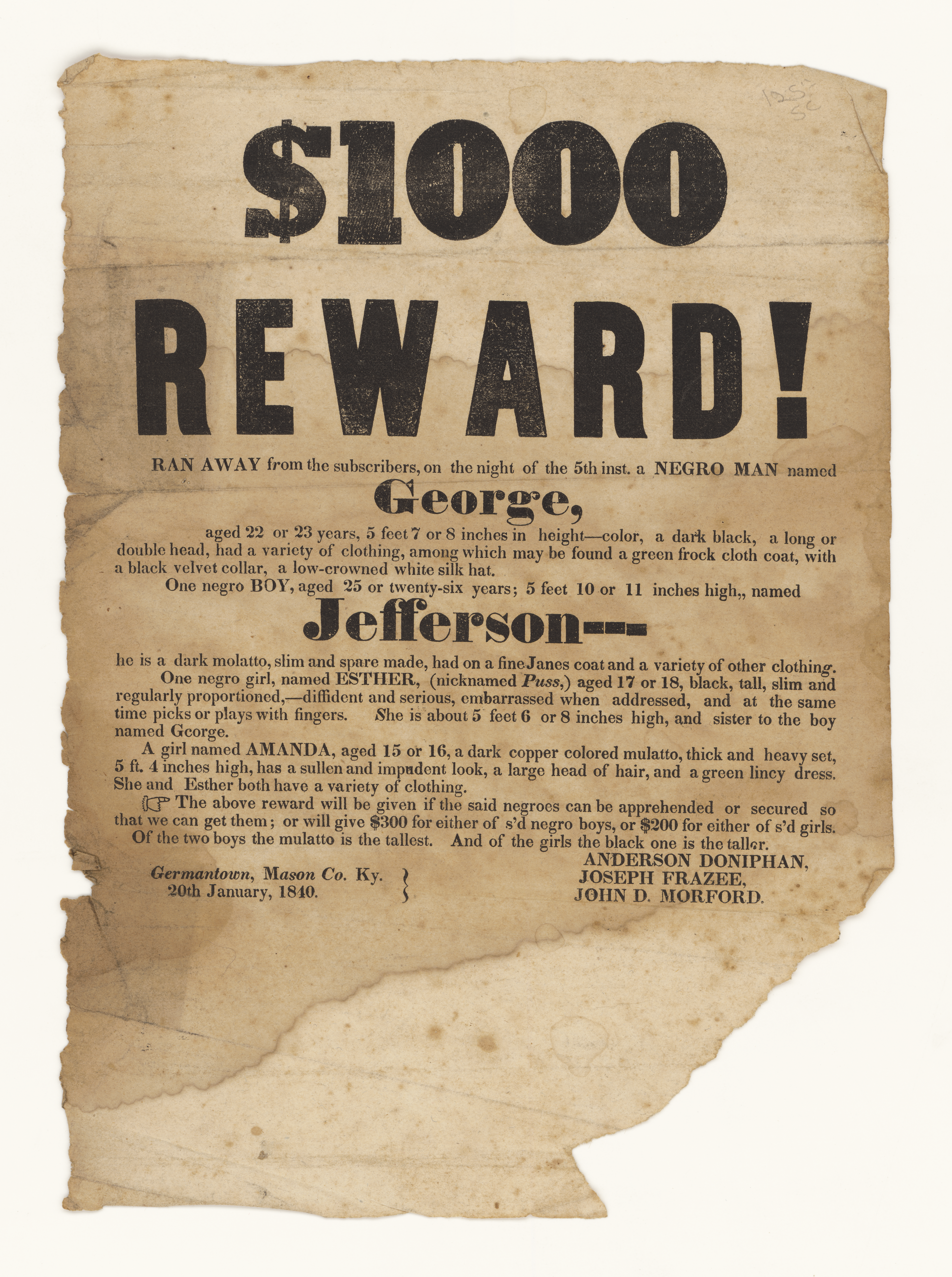This text is part of the Teaching Hard History Text Library and aligns with Key Concepts 4 and 6.

Text reads in part: "$1000 REWARD! Ran Away from the subscribers, on the night of the 5th inst. a NEGRO MAN named George, aged 22 or 23 years, 5 feet 7 or 8 inches in height--color, a dark black, a long or double head, had a variety of clothing, among which may be found a green frock cloth coat, with a black velvet collar, a low-crowned white silk hat. One negro BOY, aged 25 or twenty-six years . . . named Jefferson - - - he is a dark molatto [sic] . . . One negro girl, named ESTHER, . . . (nicknamed Puss) . . .a girl named AMANDA . . . " Posted by "Anderson Doniphan, Joseph Frazee, John D. Morford"; "Germantown, Mason Co. KY. 20th January 1840".